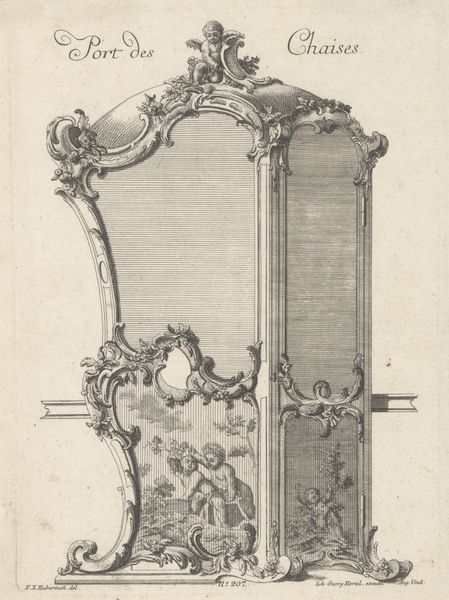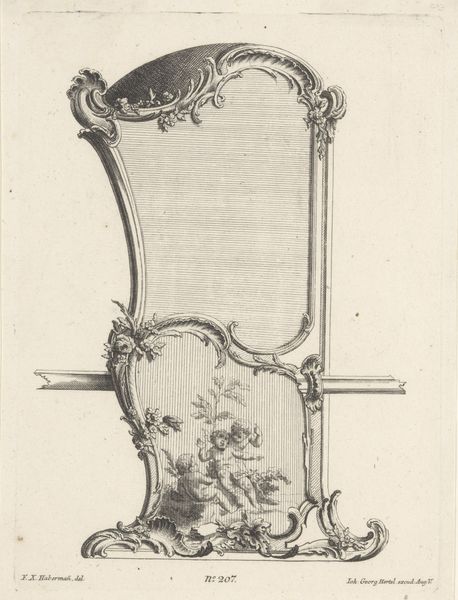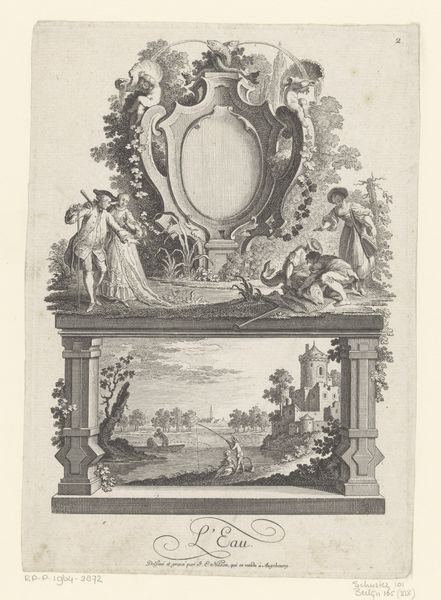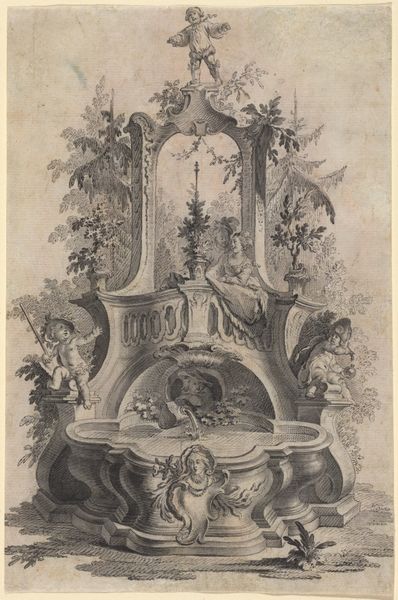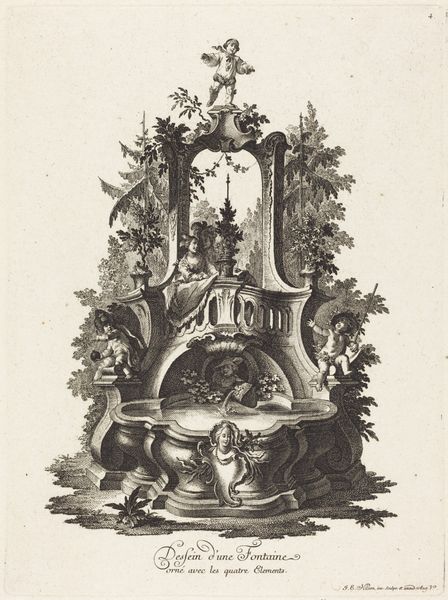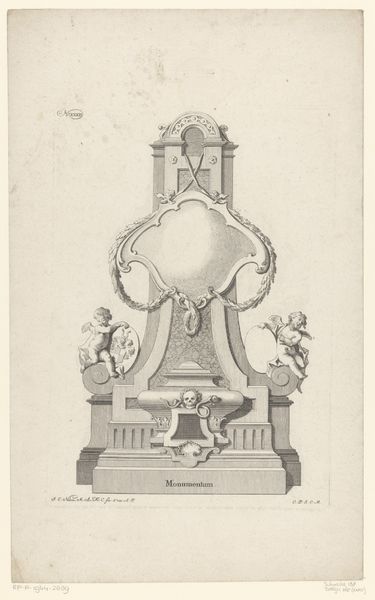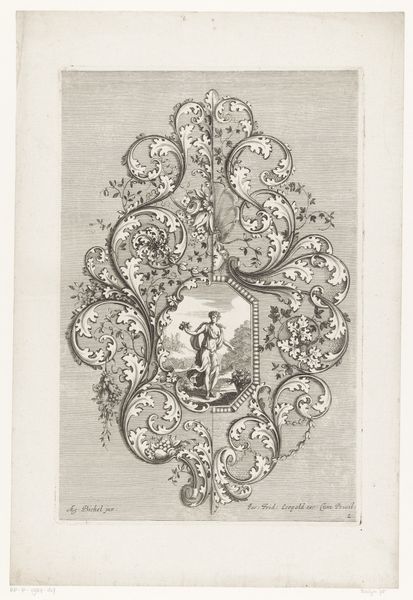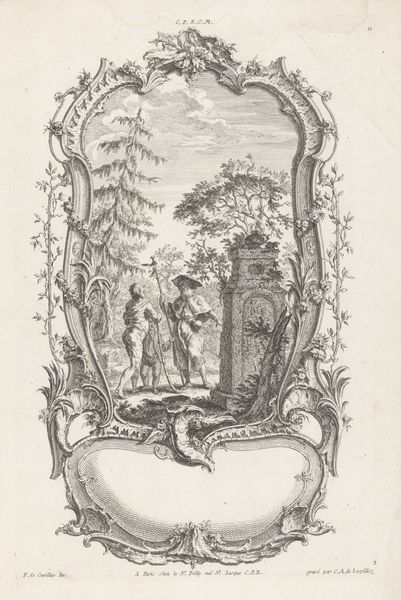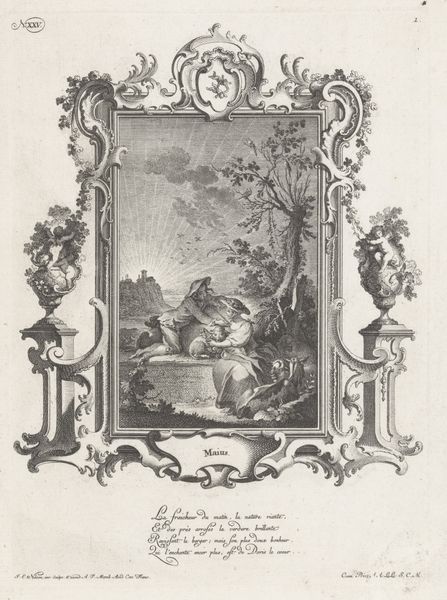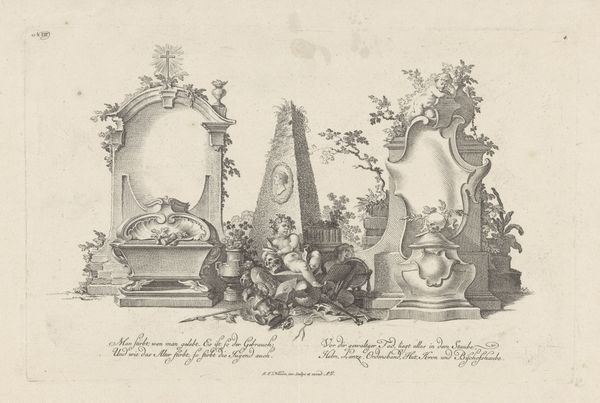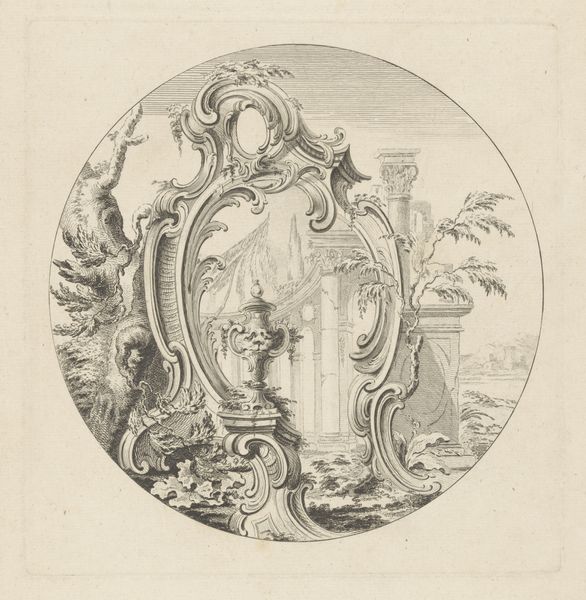
engraving, architecture
#
baroque
#
old engraving style
#
decorative-art
#
engraving
#
architecture
Dimensions: height 265 mm, width 198 mm
Copyright: Rijks Museum: Open Domain
Curator: I’m immediately struck by the dynamism of the lines; that swirling ornamentation almost seems to defy the static nature of engraving. Editor: It's fascinating, isn't it? This engraving, titled "Schouw met putti," or "Mantelpiece with putti," was created by Johann Esaias Nilson between 1731 and 1788. You can see it here at the Rijksmuseum. Curator: Nilson's Baroque style shines. Those chubby cherubs, or putti, framing the mantelpiece—each seems to embody a different aspect of jovial abundance. They suggest warmth and vitality. It is definitely aiming for a celebration of hearth and home, a comforting iconography. Editor: Exactly! Notice how the grapevine motifs add another layer to the theme of plenty, traditionally referencing classical imagery around the changing of seasons. Curator: The interplay between light and shadow created by the engraving technique further enhances this feeling of depth, wouldn’t you agree? The swirling lines accentuate the dynamic movement inherent to Baroque designs. Even in two dimensions, there's a theatrical element at play. Editor: A deliberate strategy. See how that centralized light emphasizes the symmetry—that mirrored ornamentation almost demands a philosophical investigation of form, how the cherubic figures bookend and highlight a larger whole that invites readings beyond the purely ornamental. What thoughts emerge for you, pondering this object? Curator: Thinking about the domestic settings where such images would circulate... I wonder if they unconsciously contributed to idealizing—if not actively engineering—particular emotional or symbolic associations tied to home. This puts emphasis back on fire and the role of the hearth, tying back into classical concepts of time. Editor: A powerful reflection. And ultimately, in dissecting this visually dense scene, the brilliance of Johann Esaias Nilson shines anew. Curator: Indeed, viewing it now encourages considering continuities linking aesthetic conventions, and psychological impacts from centuries prior to today's homes.
Comments
No comments
Be the first to comment and join the conversation on the ultimate creative platform.


